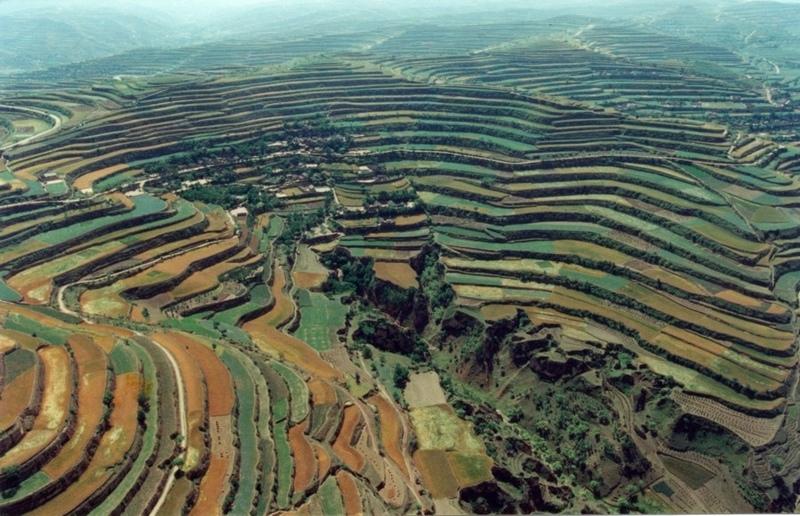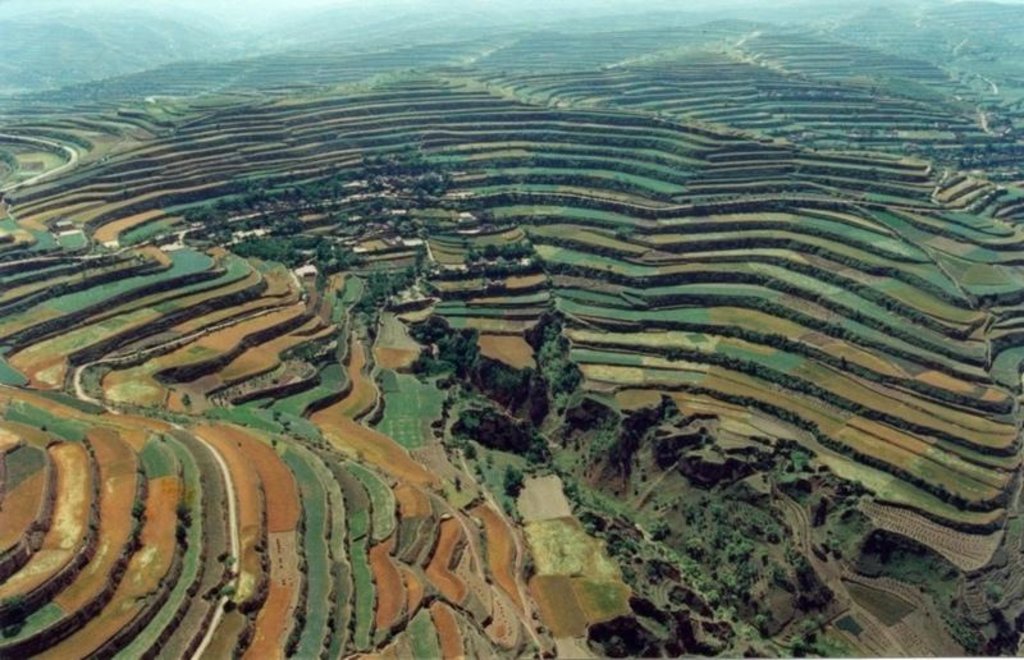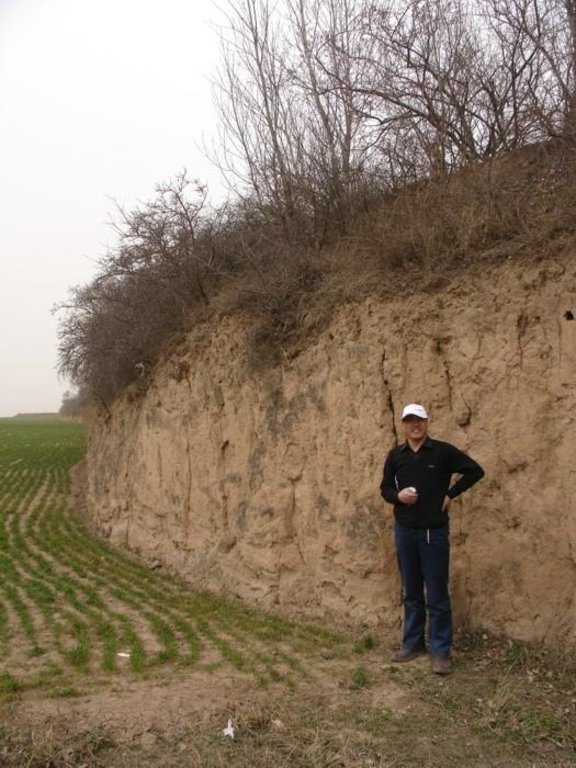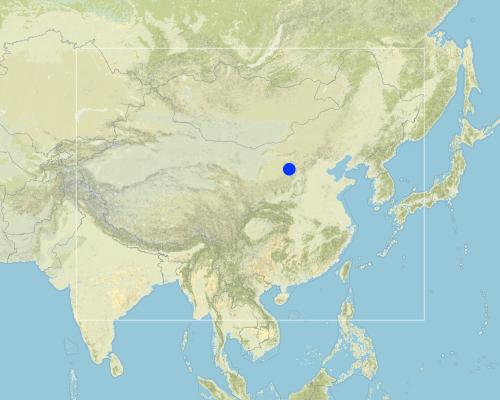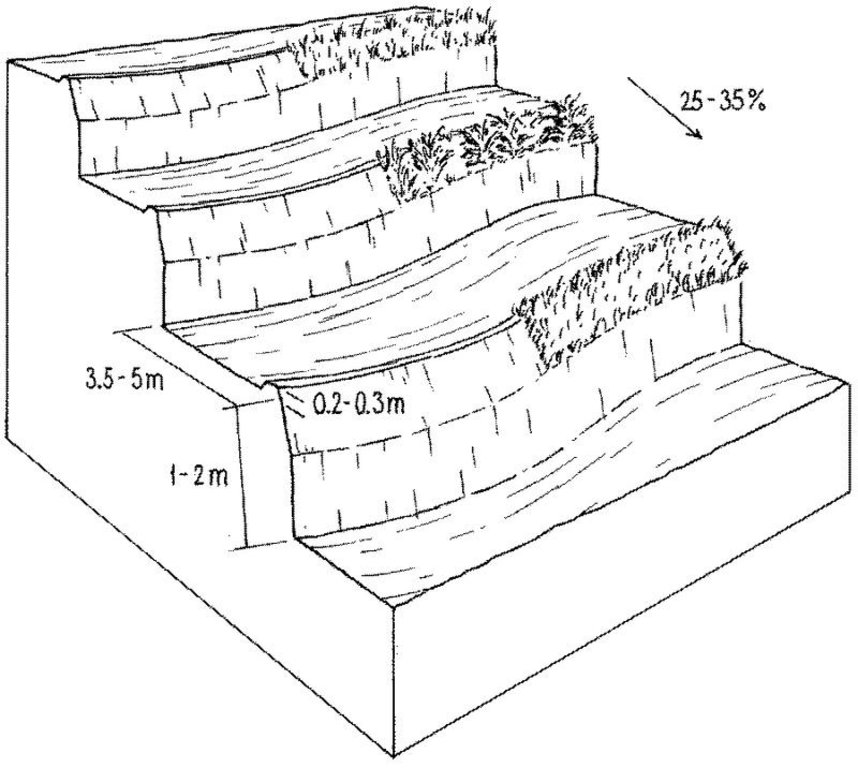Zhuanglang loess terraces [Китай]
- Создание:
- Обновить:
- Составитель: Yaolin Wang
- Редактор: –
- Рецензент: David Streiff
technologies_1419 - Китай
Просмотреть разделы
Развернуть все Свернуть все1. Общая информация
1.2 Контактные данные специалистов и организаций, участвующих в описании и оценке Технологии
Специалист по УЗП:
Специалист по УЗП:
Zhanguo Zhanguo
ISRIC
Нидерланды
Специалист по УЗП:
Название организации (-ий), содействовавших документированию/оценке Технологии (если применимо)
ISRIC World Soil Information (ISRIC World Soil Information) - НидерландыНазвание организации (-ий), содействовавших документированию/оценке Технологии (если применимо)
Department of Resources and Environmental Science, Beijing Normal University (Department of Resources and Environmental Science, Beijing Normal University) - КитайНазвание организации (-ий), содействовавших документированию/оценке Технологии (если применимо)
GEF/OP12 Gansu Project (GEF/OP12 Gansu Project) - Китай1.3 Условия, регламентирующие использование данных, собранных ВОКАТ
Когда были собраны данные (на местах)?
01/03/2006
Составитель и ответственный(-ые) специалист(-ы) согласны с условиями, регламентирующими использование собранных ВОКАТ данных:
Да
2. Описание Технологии УЗП
2.1 Краткое описание Технологии
Определение Технологии:
Level bench terraces on the Loess Plateau, converting eroded and degraded sloping land into a series of steps suitable for cultivation.
2.2 Подробное описание Технологии
Описание:
The Loess Plateau in north-central China is characterised by very deep loess parent material (up to 200 m), that is highly erodible and the source of most of the sediment in the lower reaches of the Yellow River.
The plateau is highly dissected by deep gullied valleys and gorges. The steep slopes, occupying 30-40% of the plateau area, have been heavily degraded by severe top soil and gully erosion. Over the whole Loess Plateau approximately 73,350 km2 of these erosion prone slopes have been conserved by terraces.
In the case study area (Zhuanglang County) the land that is suitable for terracing has been completely covered. The total terraced area is 1,088 km2, accounting for 90% of the hillsides. The terraces were constructed manually, starting at the bottom of the slopes and proceeding from valley to the ridge. The terraces comprise a riser of earth, with vertical or steeply sloping sides and an approximately flat bed (level bench). Depending on farmers preference some terrace beds are edged by a raised lip (a small earth ridge) which retains rainwater, others remain without lip. The semi-arid climate does not require a drainage system. For typical hillside terraces on slopes of 25-35% the bed width is about 3.5-5 metres with a 1-2 metre riser, involving moving about 2,000-2,500 cubic metres of soil (see table of technical specifications). Generally the risers are not specifically protected, but there may be some natural grasses growing on the upper part. The lower part of the riser is cut vertically into the original soil surface, and has no grass cover, being dry and compact. However it is not erosion-prone since it has a stable structure.
Over most of the Loess Plateau, the soil is very deep and therefore well suited to terrace construction. In addition to downstream benefits, the purpose is to create a better environment for crop production through improved moisture conservation, and improved ease of farming operations. In an average rainfall year, crop yields on terraced land are more than three times higher than they used to be on unterraced, sloping land. The implication is that terrace construction - though labour intensive - pays back in only three to four years when combined with agronomic improvements (such as applying farm yard manure and planting green manure). Some farmers try to make the best use of the upper part of terrace risers by planting cash trees or forage crops - including Hippophae rhamnoides (seabuckthorn), Caragana korshinskii (peashrub) and some leguminous grass. This is locally termed ‘terrace bund economy’. The plants stabilise the risers and at the same time provides extra benefits.
2.3 Фотографии, иллюстрирующие Технологию
2.5 Страна/ регион/ места, где применяется Технология, информация о которых собрана в данной Анкете
Страна:
Китай
Административная единица (Район/Область):
Gansu Province (Loess Plateau Region)
Более точная привязка места:
Zhuanglang County
Map
×2.7 Внедрение Технологии
Укажите, как именно Технология УЗП была внедрена:
- через проекты/ внешнее вмешательство
3. Классификация Технологии УЗП
3.2 Текущий(-ие) тип(-ы) землепользования на территории, где применяется Технология

Пахотные угодья и плантации
- Однолетние культуры
- Древесные и кустарниковые культуры
Основные сельскохозяйственные культуры (товарные и продовольственные):
major cash crops: peas
major food crops: wheat, maize, potato, millet, sorghum
perrenial tree and shrub cropping: apple, pear and peach; walnut
Пояснения:
Major land use problems (compiler’s opinion): Cultivation of unterraced hillside slopes leads to serious soil erosion and problems of downstream sedimentation.
Loss of topsoil and rainwater in uncontrolled runoff has contributed to declining crop yields.
3.3 Дополнительная информация о землепользовании
Обеспеченность водой участков, где реализуется Технология :
- богарные земли
Число урожаев за год:
- 1
Поясните:
Longest growing period in days: 160Longest growing period from month to month: May to September
3.4 Категория УЗП, к которой относится Технология
- мероприятия по влагозадержанию и снижению эрозии почв на склонах
- terraces
3.5 Распределение Технологии по площади
Пояснения:
Total area covered by the SLM Technology is 1080 m2.
3.6 Мероприятия УЗП, выполняемые в рамках Технологии

инженерные мероприятия
- И1: Террасирование
Пояснения:
Main measures: structural measures
3.7 Основные проблемы деградации земель, на решение которых направлена Технология

водная эрозия почв
- ВЭп: поверхностная эрозия/смыв верхних почвенных горизонтов
- ВЭл: овражная эрозия / оврагообразование
- ВЭд: косвенное воздействие водной эрозии

ухудшение химических свойств почв
- Хп: Снижение плодородия и уменьшение содержания органического вещества (вызванное не эрозией, а другими причинами)

деградация водных ресурсов
- Ва: почвенная засуха
Пояснения:
Main type of degradation addressed: Wt: loss of topsoil / surface erosion, Wg: gully erosion / gullying, Wo: offsite degradation effects, Cn: fertility decline and reduced organic matter content, Ha: aridification
Main causes of degradation: soil management (Absence or bad maintenance of erosion control measures), other human induced causes (specify), poverty / wealth (Lack of captial), education, access to knowledge and support services (Lack of knowledge)
Secondary causes of degradation: labour availability (Lack of labour)
3.8 Предотвращение и снижение деградации земель, или восстановление нарушенных земель
Укажите цель Технологии по отношению к деградации земель :
- восстановление/ реабилитация нарушенных земель
Пояснения:
Main goals: rehabilitation / reclamation of denuded land
4. Технические характеристики, мероприятия по практической реализации, вложения и стоимость
4.1 Технический рисунок, иллюстрирующий Технологию
4.2 Спецификация / пояснения к техническому рисунку
Layout of level bench terraces on the Loess Plateau: the lower, vertical section is cut into the compacted soil. Natural grasses -
or planted grass/ shrub species - protect the more erodible and less steep upper part of the riser. The low ‘lip’ is optional.
Technical knowledge required for field staff / advisors: high
Technical knowledge required for land users: low
Main technical functions: reduction of slope angle, reduction of slope length, increase of infiltration, increase / maintain water stored in soil, water harvesting / increase water supply, retains runoff in-situ, reduces downstream flooding, reduces sediment deposition (a national/regional concern)
Structural measure: level bench terraces
Height of bunds/banks/others (m): 1-2
Width of bunds/banks/others (m): 3.5-5
Construction material (earth): loess parent material
Slope (which determines the spacing indicated above): 30%
4.3 Общая информация по необходимым вложениям и стоимости
Уточните, как рассчитывались затраты и вложения:
- на площадь, где применяется Технология
Укажите размер и единицу площади:
ha
Укажите денежные единицы, использованные для подсчета затрат:
- Доллары США
4.4 Мероприятия, необходимые для начала реализации
| Деятельность | Тип мероприятия | Сроки | |
|---|---|---|---|
| 1. | Contour lines are marked out using pegs to show the location for the base of each terrace wall | Инженерные | - |
| 2. | A trench is dug out along the marked line to serve as the foundation | Инженерные | |
| 3. | A trench is dug out along the marked line to serve as the foundation | Инженерные | - |
| 4. | The topsoil between the pegged lines is removed and put aside | Инженерные | |
| 5. | See Annex T3: alternative ways of constructing the wall/riser, bed | Инженерные | |
| 6. | The wall is raised slightly higher to form a lip to retain rainwater on the | Инженерные | - |
4.5 Вложения и затраты, необходимые для начала реализации
| Опишите затраты | Единица | Количество | Затраты на единицу | Общая стоимость на единицу | % затрат, оплаченных землепользователями | |
|---|---|---|---|---|---|---|
| Оплата труда | Voluntary and paid (building terraces) | ha | 1,0 | 1200,0 | 1200,0 | 97,0 |
| Оплата труда | survey of labour | ha | 1,0 | 60,0 | 60,0 | |
| Оборудование | tools | ha | 1,0 | 30,0 | 30,0 | 100,0 |
| Строительные материалы | earth | ha | 1,0 | |||
| Общая стоимость запуска Технологии | 1290,0 | |||||
Пояснения:
Duration of establishment phase: 4 month(s)
4.6 Поддержание/ текущее обслуживание
| Деятельность | Тип мероприятия | Сроки/ повторяемость проведения | |
|---|---|---|---|
| 1. | 1. Repairing any collapses in the terrace wall – often caused by heavy | Инженерные | |
| 2. | 2. Re-levelling of the terraces where necessary. This work is usually done by hand, using shovels and two-wheel carts. | Инженерные |
4.7 Стоимость поддержания/ текущего обслуживания ( в год)
| Опишите затраты | Единица | Количество | Затраты на единицу | Общая стоимость на единицу | % затрат, оплаченных землепользователями | |
|---|---|---|---|---|---|---|
| Оплата труда | Reparing terraces | ha | 1,0 | 25,0 | 25,0 | 97,0 |
| Оборудование | tools | ha | 1,0 | 10,0 | 10,0 | |
| Строительные материалы | earth | ha | 1,0 | |||
| Общая стоимость поддержания Технологии | 35,0 | |||||
Пояснения:
Calculations above are based on the following situation: slopes of about 25-35%, bed width of 3.5-6 m, and a 1-2 m high riser, involving moving about 2,000-2,500 cubic metres of soil. Note: these calculations are based on several years experience in Zhuanglang: that is why they differ in some respects from the standardised table in 2.4.1.
5. Природные и социально-экономические условия
5.1 Климат
Среднегодовое количество осадков
- < 250 мм
- 251-500 мм
- 501-750 мм
- 751-1000 мм
- 1001-1500 мм
- 1501-2000 мм
- 2001-3000 мм
- 3001-4000 мм
- > 4000 мм
Агроклиматическая зона
- полузасушливая
5.2 Рельеф
Склоны (преобладающие):
- пологие (0-2%)
- покатые (3-5%)
- покато-крутые (6-10%)
- крутые (11-15%)
- очень крутые (16-30%)
- чрезвычайно крутые (31-60%)
- обрывистые (>60%)
Формы рельефа:
- плато/ равнины
- гребни хребтов/холмов
- склоны гор
- склоны холмов
- подножья
- днища долин
Зона высотной поясности:
- 0-100 м над уровнем моря
- 101-500 м н.у.м.
- 501-1000 м н.у.м.
- 1001-1500 м н.у.м.
- 1501-2000 м н.у.м.
- 2001-2500 м н.у.м.
- 2501-3000 м н.у.м.
- 3001-4000 м н.у.м.
- > 4 тыс. м н.у.м.
Укажите, приурочено ли применение Технологии к специфическим условиям:
- не имеет значения
Комментарии и дополнительные сведения по условиям рельефа/ топографии :
Slopes on average: also rolling
Altitudinal zone: 501- 2000 m a.s.l.
Landforms: Also ridges
5.3 Почвы
Средняя мощность почв:
- поверхностные (0-20 см)
- неглубокие (21-50 см)
- умеренно глубокие (51-80 см)
- глубокие (81-120 см)
- очень глубокие (> 120 см)
Гранулометрический состав (верхнего горизонта):
- средние фракции (суглинистый, супесчаный)
Содержание органического вещества в верхнем горизонте:
- низкое (< 1%)
Если возможно, приложите полное описание почв или укажите доступную информацию, например тип почв, рH/ кислотность почв, ёмкость катионного обмена, содержание азота, содержание солей и т.д.
Soil fertility: low-medium
Soil drainage / infiltration: good
5.6 Характеристика землепользователей, применяющих Технологию
Рыночная ориентация производства:
- смешанное (самообеспечение/ товарное хозяйство
Доходы из других источников:
- 10-50% всех доходов
Индивидуальное или коллективное хозяйство:
- частное/ домовладение
Укажите другие важные характеристики землепользователей:
Off-farm income specification: working in construction, temporary employments
Market orientation mixed (subsistence and commercial): ash crop (peas) and food crops (potatoes, wheat, maize, millet, sorghum)
5.7 Средний размер земельных участков, арендуемых или находящихся в собственности землепользователей, применяющих Технологию
- < 0,5 га
- 0,5-1 га
- 1-2 га
- 2-5 га
- 5-15 га
- 15-50 га
- 50-100 га
- 100-500 га
- 500-1000 га
- 1000-10000 га
- > 10000 га
Считается ли это мелким, средним или крупным хозяйством (по местным масштабам)?
- мелкое
Пояснения:
Average area of land owned or leased by land users applying the Technology: < 0.5 ha, 0.5-1 ha, 1-2 ha
5.8 Собственность на землю, права на земле- и водопользование
Землевладелец:
- государственная
Право землепользования:
- индивидуальное
6. Воздействия и заключительные положения
6.1 Влияние Технологии УЗП в пределах территории ее применения
Социально-экономическое воздействие
Продуктивность
производство сельскозяйственных культур
Доходы и затраты
доходы хозяйства
Другое социально-экономическое воздействие
easier field operation
production during the first year of implementation
Социальное и культурное воздействие
местное самоуправление
смягчение конфликтов
Экологическое воздействие
Почвы
влажность почв
утрата почв
6.2 Влияние Технологии за пределами территории ее применения
надежность и постоянство водотоков
подтопление ниже по течению
отложение наносов ниже по течению
transported sediments
6.4 Анализ эффективности затрат
Насколько получаемый результат сопоставим с первоначальными вложениями (с точки зрения землепользователей)?
Эффективность затрат в краткосрочной перспективе:
отрицательно
Эффективность затрат в долгосрочной перспективе:
очень позитивное
Насколько получаемый результат сопоставим с текущими расходами по поддержанию технологии (с точки зрения землепользователей)?
Эффективность затрат в краткосрочной перспективе:
позитивное
Эффективность затрат в долгосрочной перспективе:
очень позитивное
6.5 Внедрение Технологии
Если возможно, дайте количественную характеристику (число домохозяйств и/или площадь применения):
NA
Пояснения:
There is no trend towards spontaneous adoption of the Technology
Comments on adoption trend: - The technology was implemented on a large scale through government initiated mass campaigns.
- The technology has generally not spontaneously spread beyond the areas developed through government intervention: the area that is suitable for terracing has been covered.
- Uncertainty over future land use rights limits the willingness of households to meet the costs of terrace construction.
6.7 Сильные стороны/ преимущества/ возможности Технологии
| Сильные стороны/ преимущества/ возможности по мнению землепользователей |
|---|
| Diversification of production: terracing makes cultivation of new cash crops possible: flax (for linseed oil), pears, apples, apricots, water melon; all these give high returns and thus make terrace construction profitable. |
| Benefits pay back the investments after only three to four years; approx. calculated on the basis of US$ 450 extra income per annum per hectare (for wheat) vs US$ 1,200 labour investment per hectare. |
| Сильные стороны/ преимущества/ возможности по мнению составителя или других ключевых специалистов |
|---|
|
Reduced erosion, reduced loss of rainwater through runoff (increased in water use efficiency) and reduced fertility loss due to reduced slope angle and length How can they be sustained / enhanced? Maintain the quality of terrace construction. |
|
Increased soil moisture How can they be sustained / enhanced? Construct/maintain a terrace lip to retain rainwater on the terrace |
|
Increased crop production (before 1983 hunger and starvation in the area) How can they be sustained / enhanced? Combine with improved crop husbandry. |
| Easier field operations: the level terrace is easier to cultivate than the original hill slope. |
| Improvements of farmers’ living standard and decline in poverty stricken population. |
6.8 Слабые стороны/ недостатки/ риски Технологии и пути их преодоления
| Слабые стороны/ недостатки/ риски по мнению составителя или ответственных специалистов | Возможные пути их преодоления/снижения? |
|---|---|
| Terrace riser can be destroyed by storms – and, sometimes, rodent holes | Good and timely repair and maintenance: planting upper parts of the risers with grass, bushes or even trees help to stabilise the risers but can lead to competition with the crop for water. |
| High cost/input for construction and establishment | Given the high erodibility of the soil and the steep slopes there is no real alternatives to labour-intensive terracing. |
| High loss of soil moisture due to evaporation from the soil surface. Wind erosion due to tillage | Protect soil surface for example by conservation agriculture – comprising permanent cover, crop rotation, reduced tillage – could be supplementary agronomic and vegetative options. |
| Decrease in production in first year | Apply manure and fertilizer. |
7. Справочные материалы и ссылки
7.2 Ссылки на опубликованные материалы
Название, автор, год публикации, ISBN:
Terraces In China. Published By Ministry Of Water Resources Beijing, PRC.. 1989.
Название, автор, год публикации, ISBN:
Conservancy engineering budgetary estimateration. Issued by Ministry of water resources of PRC, Published by Yellow-river water conservancy publishing company, Zhengzhou, PRC. 2003.
Название, автор, год публикации, ISBN:
A Great Cause for Centuries – 50 Years in Water and Soil Conservation in China. Published by Department of Soil and Water Conservation, Ministry ofWater Resources Beijing, PRC. 2000.
Название, автор, год публикации, ISBN:
Dongyinglin, Changpiguang, Wangzhihua: Discussion on several questions onincreasing production of the terrace with two banks; Soil and Water Conservation Science and Technology in Shanxi. No. 1, p 36–37. 1990.
Название, автор, год публикации, ISBN:
Liumingquan, Zhangaiqin, Liyouhua:Pattern engineering of reconstruction the slope cropland; Soil and Water Conservation Science and Technology in Shanxi,No. 3, p 18–21. 1992.
Название, автор, год публикации, ISBN:
Liangqichun, Changfushuang, Liming: A study on drawing up budgetary estimate quota of terraced field; Bulletin of Soil andWater Conservation, Vol. 21, No. 5, p 41–44. 2001.
Название, автор, год публикации, ISBN:
Lixuelian, Qiaojiping: Synthetic technology of fertilizing and improving production on the newterrace. Terraces in China. Soil and Water Conservation Science and Technology in Shanxi, No. 3, p 13–14. 1998.
Ссылки и модули
Развернуть все Свернуть всеСсылки
Нет ссылок
Модули
Нет модулей


